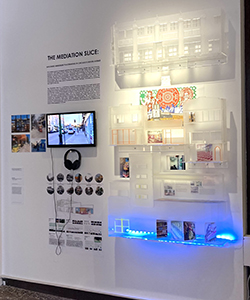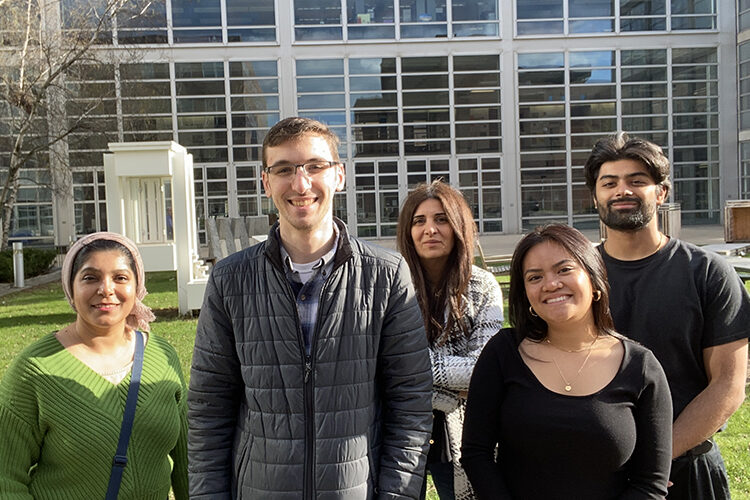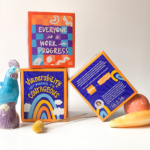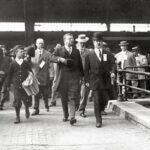A group of architecture students, faculty and an alumna designed an exhibition on display at the Venice Biennial, an architecture exhibition taking place in Venice, Italy, May 20 through Nov. 26.
The “Time-Space-Existence Exhibition,” organized by the European Cultural Centre-Italy, focuses on sustainable and diverse neighborhoods that are managing change.

UWM’s exhibit focuses on Chicago’s Devon Avenue neighborhood, on the city’s north side.
Mania Tahsina Taher, a doctoral candidate and adjunct lecturer in the School of Architecture and Urban Planning, led the effort in collaboration with school alumna Negin Moayer, owner and design director of BNMO Design in Chicago.
BNMO Design, which focuses on architectural projects and installations that help maintain the affordability and integrity of city neighborhoods, originally received the invitation from the European Cultural Center. Moayer, who is also an adjunct faculty member in the School of Architecture and Urban Planning, enlisted Taher in the project and they decided to collaborate, starting with a fall design studio.
Students John Cerny Jr., Haren Patel and Payton Tolentino Quesea were part of the team designing UWM’s exhibition.
During the spring semester, the UWM team held a workshop at the School of Architecture and Urban Planning. The team also talked to community people and to Associate Professor Arjit Sen, who shared his opinions based on his earlier research experiences on Devon Avenue. The team focused on community engagement around the built environment, along with the area’s history and cultural landscapes, to help inform their design.

“Devon Avenue is an example of an urban ethnic neighborhood that where the commercial district and social life have thrived through waves of immigration,” Taher said. The area has been home to Hispanic, African, Middle Eastern, Indian, Pakistani and Jewish communities through the years, she added.
The varied architecture in the neighborhood – schools, churches and businesses – reflects the growth and change in the area, Cerny said. “They have so much to offer in understanding the continuous creation of the built environment.”
As a second-generation immigrant, Patel was interested in the international implications of Devon Avenue’s continuing growth and change. “It was interesting to see how different generations can re-use these buildings.”
The design for the exhibition is a three-foot-wide space with installations replicating the existing environment using translucent acrylic. The design was backlit with a screen displaying recorded voices and quotes from community members sharing their thoughts about the neighborhood.
One resident, Khalid shared his view:
“None of the streets in the world has connections to world crisis as it has in Devon; you look at a newspaper and see something happening in Syria or the Texan government not wanting refugees. In the morning, you wake up, and you will see the Syrians and Venezuelans over Devon… the street hosts foods from all over the world for its people in its groceries.”
Another community member, Reema, added:
“Last 14 years, I have been living here in Devon, and I feel like Devon is my second home. I am from India. I can find many people like me, and they are very helpful people over here. It is a very safe area.”
UWM and the School of Architecture and Urban Planning supported the project, according to Taher. The team hopes to bring it to UWM in the spring of 2024, she added.







